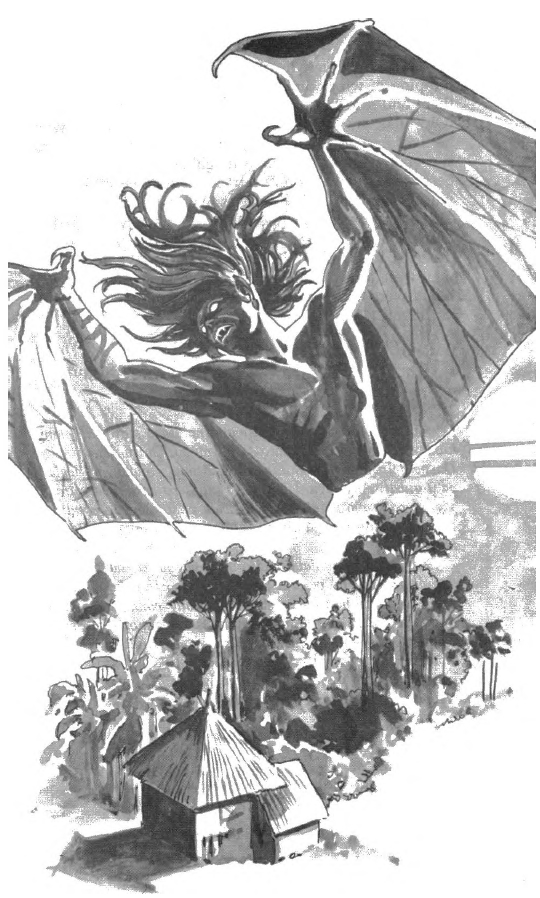“What’s an aswang?” once asked Wayland D. Hand, fascinated by the conflicting traits glimpsed through the scattered material about this mythical being. I rashly volunteered to find out, little knowing that the search was to get me into unexplored territory and that to answer Dr. Hand’s question I must first categorize and classify the traits and functions of just about the entire lower Philippine pantheon.” ~ Dr. Maximo Ramos, from his 1971 Philippine Folklore Society Paper #3
This was the set-up for The Aswang Syncrasy in Philippine Folklore – a 100 page expansion on the 6 classifications Dr. Maximo D. Ramos gave to the aswang in his 1965 Ph.D dissertation paper for the University of the Philippines – The Creatures of Philippine Lower Mythology. The Philippine Folklore Society paper boasts 87 “Illustrative Accounts in Vernacular Texts and Translations”. It really does have a wide array of stories – ranging from the popular fetus sucking manananggal, to people urinating fish sauce. The stories are mostly of Visayan origin, but travel from the tip of Luzon, to the base of Mindanao.
The Aswang Syncrasy is the single most important piece of literature for those wanting to understand the complexities of the aswang and its effects on Philippine society. It was a cornerstone for my research while making The Aswang Phenomenon Documentary. Since, I have been constantly confronted passively by people who are positive what an aswang is – based on their regional beliefs. If this paper was mandatory reading, Filipinos could see the vast intricacies, and unique qualities of all regions in the Philippines. Instead, there seems to be a competition on who holds the most horrifying aswang folk tales and which one is the most “genuine”. What Filipinos should focus on is the colorful mix of stories, backgrounds, ideas, and perspectives, that promote their unifying diversity.

The Aswang Complex
In 1990, Phoenix Publishing reprinted this paper under the title The Aswang Complex in Philippine Folklore. It was again re-printed by Phoenix in 1998. In 2012, I visited the Phoenix showroom on Quezon Avenue and was surprised to learn that many of Dr. Ramos’ books were still available. I purchased as many copies as I could carry – including 15 copies of The Aswang Complex. I sold these copies on Ebay and have shipped them to the UK, Germany, Spain, US, Canada, Australia and mailed my very last copy to China today. There is a global interest in the subject!

I hope that the interest in Philippine Mythology around the world, and the Philippines embracing and exploring their regional folklore will continue to grow. You should keep your eyes open for a used copy of The Aswang Syncrasy in Philippine Folklore or The Aswang Complex in Philippine Folklore. Both versions contain a foreword by F. Landa Jocano which rings just as true today as it did 46 years when it was written.
“THE PUBLICATION OF THIS BOOK is a bold attempt to present to the reader and to students of Filipino society and culture one of the dominant Filipino beliefs, the aswang. For some strange reason the belief has never been explored for its usefulness in the field of literature or social studies. Even educators shy away from it, branding the belief as superstitious and therefore not to be perpetuated. While this view is entertained, however, there is continued use in the schools—including the nursery schools—of Western tales like “Hansel and Gretel,” ‘Rapunzel,” “Snow White,” and so forth, dealing with witches, dwarfs, and other people of lower mythology. It is sad to note that while we accept these stories as entertaining to our children, we reject our own folktales about equivalent characters as superstitious and undesirable.
It is about time that we changed our perspective, that we accepted our own literary heritage and used it if we are to make education meaningful to our children. Maximo D. Ramos has provided us with one way to achieve this. And herein lies the lasting contribution of Maximo D. Ramos not only to the study of Philippine folklore in particular but also to the understanding of Filipino society and culture in general. This book is a must for those who seek to explore the fascinating world of Filipino supernatural experience.” ~ F. Landa Jocando, Former Chairman/ Department of Anthropology University of the Philippines
Dr. Ramos’ work consists of 10 volumes.
Jordan Clark is a Canadian born descendant of Scottish immigrants living on the homelands of the Lekwungen speaking peoples. His interest in Philippine myth and folklore began in 2004. Finding it difficult to track down resources on the topic, he founded The Aswang Project in 2006. Shortly after, he embarked on a 5 year journey, along with producing partner Cheryl Anne del Rosario, to make the 2011 feature length documentary THE ASWANG PHENOMENON – an exploration of the aswang myth and its effects on Philippine society. In 2015 he directed “The Creatures of Philippine Mythology” web-series, which features 3 folkloric beings from the Philippines – the TIKBALANG, KAPRE and BAKUNAWA. Episodes are available to watch on YouTube. Jordan recently oversaw the editing for the English language release of Ferdinand Blumentritt’s DICCIONARIO MITOLÓGICO DE FILIPINAS (Dictionary of Philippine Mythology) and is working on two more releases with fellow creators scheduled for release later this year. When his nose isn’t in a book, he spends time with his amazing Filipina wife of 20 years and their smart and wonderful teenaged daughter.


